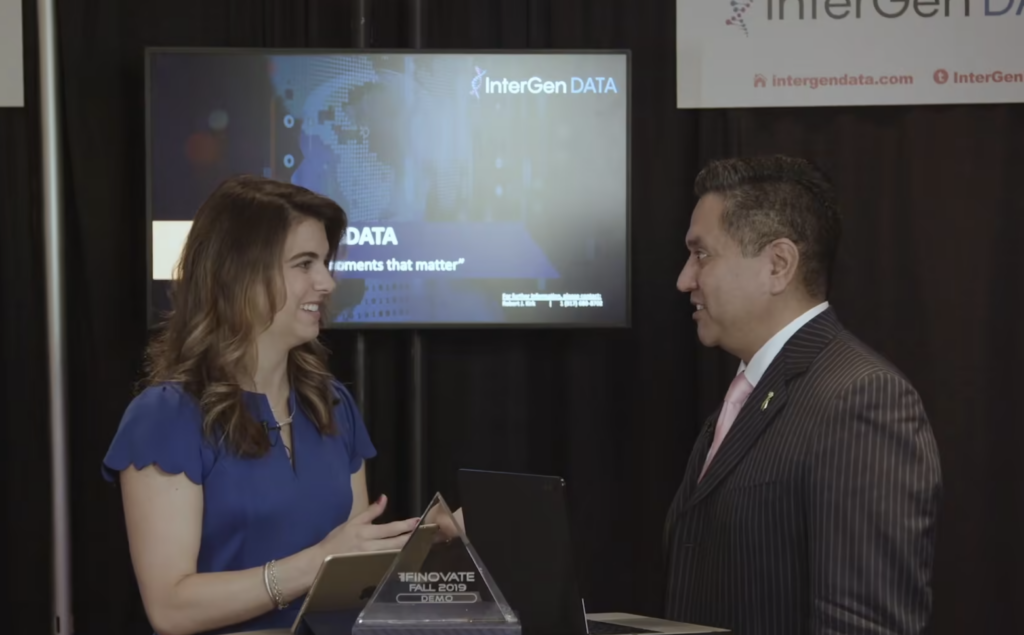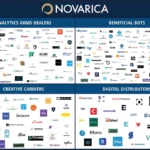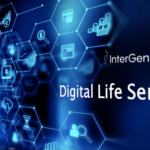Everyone knows the saying “life happens.” What if your bank, or financial advisor, or even insurance company could help you prepare for those intangible moments? Robert Kirk, CEO and Founder of InterGen Data discusses how his company is helping people leverage the moments that matter through AI.
MEDICI’s Shannon Rosic interviews Robert Kirk, CEO of InterGen Data and takes a deeper look into InterGen Data’s core product – DAVID – Digital Advice Via Demographics. DAVID’s Web Platform (browser and widget) is the world’s first artificial intelligence experience that provides its users with a cash flow forecasted model that shows the financial impact of upcoming life events. The platform allows the user to experience, in real-time, what any financial plan should incorporate. Watch the video on Vimeo at https://vimeo.com/381549577.
Shannon Rosic:
Everyone knows the saying “life happens”. We can all plan as much as we can, but always expect the unexpected especially when it comes to something as sensitive as financials. But what if your bank or financial advisor or even your insurance company could help you prepare for those intangible moments? I caught up with Robert Kirk, CEO and founder of InterGen Data, to hear how his company is helping people leverage the moments that matter. Robert, thank you so much for joining me.
Robert Kirk:
Oh, thank you for having me. It’s great to be here.
Shannon Rosic:
Absolutely. So talk to me a little bit about InterGen Data’s origins and how you were inspired to start the company.
Robert Kirk:
So InterGen Data was started because of a tragic life event. My grandfather had gotten to the point in his age where he got Alzheimer’s. And Alzheimer’s was a pretty bad disease and we had to move him into a long-term care facility. But what we weren’t prepared for was the cost of that long-term care facility. It was around $14,000 a month and it happened over four years that we had him there. So we were talking a massive number, literally six, seven hundred thousand dollars, that we were concerned with and we didn’t really know how to handle. So from that perspective I said, “Well, wait a minute, we should’ve planned about this. We should’ve thought about this, we should understand what it takes to go through an event like this and why didn’t we save?” Well, I started the company to help other people not have that happen to them, for them to start thinking of the things that are going forward.
Shannon Rosic:
Absolutely. So talk to me a little bit about the technology that you’re leveraging to run the platform, specifically around AI and machine learning.
Robert Kirk:
So we have an Oracle-based system, it’s on a Weka platform. We use it for a lot of classifications and we take a ton of data from outside and inside and use that to not only predict what’s about to happen, but to be able to understand when these things are likely to happen. And then we associate that with costs. So we do a lot of machine learning by grouping very similar things according to how you are or how I am.
Shannon Rosic:
And I would imagine that compliance and risk probably a little difficult to navigate when it comes to predicting life events. How are you navigating those waters?
Robert Kirk:
So compliance and risk are really key to kind of what we do. First of all, if you think about compliance, every piece of legislation, every regulation, is to protect the individual from the big bad banks or insurance companies. But they’re really not bad. So what we’ve got to think about is if you’re in compliance, you’re doing the right thing for the customer. And with our technology, if you understand what the customer’s going through, you’re actually helping prove that you are in compliance because you know what they’re likely to go through and you can use that data to say, “Hey, you’re just like 5.8 other million people. It’s okay, we’ll help you through it.”
Robert Kirk:
On the risk side, that’s where it gets interesting. We’re looking at combining data, not just of a single person, my wife, my child, my other child, and you’re looking at it as a whole family. And when you see the whole family perspective, your whole risk model starts to change because it’s not one point in time, it’s a family as it’s projected to go forward.
Shannon Rosic:
Well, I’d love to see how the platform actually works then.
Robert Kirk:
Awesome. Let me show you.
Video:
DAVID stands for Digital Advice via Demographics and I will show you how to use it. Now, as you can see, we take a very standard robo-like approach to our UI and as I answer some of the appropriate questions, we can begin. This, the screen here that you see about demographics, is where we differentiate ourselves from the rest of the industry. As you can see, some of these questions aren’t standard, but what this will allow me to do is take advantage of all of the advanced artificial intelligence and machine learning that we have in our system today. As I make these selections… Or I’m going to ask a little bit more information about my family, my marriages, my children, as well as your home, but in order to show you the power of our predictive technology, I’m going to select default answers and skip ahead to the next section.
Video:
In this section we’re at the healthcare screen and what we see here is your generational information about specific diseases. And as I go through and select various criteria, that’s going to help us understand what diseases I am likely to have. From a generational perspective, we’re looking at your parents and your grandparents and whether or not they’ve had this disease.
Video:
Now finally, once that’s done, we can actually see the results and here we are. So let’s skip the pie chart of the recommended asset allocation and let’s go directly to the LSLE cashflow tab. Now LSLE stands for Life Stage and Life Event, which is where we’re going to see all of the predicted life events that are likely to happen to me in a cashflow forecasted chart. As you can see, the green here is my disposable income. Here’s when I’m likely to buy my first car, put my money down for my house, oh, and have children. Here’s when I’m likely to buy a second car, have a second child, and the expenses of those child each and every year. More importantly, it also tells me things like when I’m likely to get diabetes or kids going to college, and even things like cancer. As you can see, this information is powerful. And our belief is that by understanding who you are and what’s likely ahead in journey, we will be better able to help you plan for the unexpected.
Shannon Rosic:
Wow, that’s really impressive. But is this applicable outside of wealth management?
Robert Kirk:
So it is. The beautiful part is you have the ability to get into mortgages, to understand risk, so for example, when people might default. Because basically the top six reasons for most defaults happen to be life events, loss of a job, loss of a spouse, maybe there was a divorce and all of these things kind of start to trail down and trickle down until the point where you have to give up. So if you can know this data ahead of time, you get a little early warning system. In insurance, it tells you about the things that you might need in the future and what to save for. So there are other applications that go outside of this and that you can use in multiple types of industries.
Shannon Rosic:
And what has the reception been between various demographics? I know myself as a millennial, I would find something like this insanely useful in my planning.
Robert Kirk:
So I love this question and here’s why. So millennials tend to look at the computer as a tool that will help them. There’s a lot of folks, even in my generation, Gen X, that sits there and says, “Well, I’m not sure, how do I use this? What can I use it for?” But what’s interesting is if you talk to the average person, the older people, so let’s say the baby boomers, they use technology every day. They use it all the time. And in fact they use it more than I do. So my grandmother talks to the millennials all the time. And it’s amazing because I’m the guy in the middle who’s trying to use technology. So you see almost everybody use it in one way, shape, or form. The real key is, is it a tool? Is it something you’ve put all of your life into? Or is it something that is there to help you, give you more education and better understanding? And that’s where we see a lot of people really jumping into it.
Shannon Rosic:
Absolutely. And it seems like it’s truly bridging that gap for folks. So Robert, thank you so much for your insights.
Robert Kirk:
Awesome. Thank you for having us. Take care.
Shannon Rosic:
It’s clear that when people are provided the right information, data, and tools, they can better prepare for their future. From MEDICI STUDIO, I’m Shannon Rosic.
Share this article
InterGen Data named as one of the Top 250 InsureTech firms for 2020 by Novarica
Novarica | 09.08.20 InsureTech Startup Market Continues to Grow, with Increased Focus on Customer Experience and Rapid Time-to-Value for…
INV Fintech Unveils Slate of 10 Startups for Newest Accelerator Cohort
INV Fintech, Bank Innovation’s sister accelerator, announced its ninth class today of 10 startups from around the world. The startups…
Welcome to the Digital Life Series
In this video webcast series we will discuss the importance of Life…




